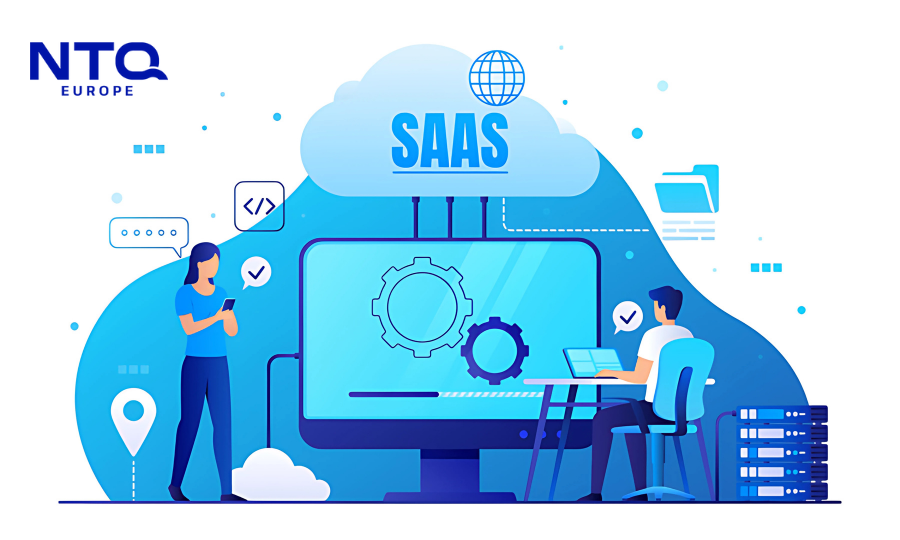Legacy Systems: Reliable Workhorses, Until They’re Not
Legacy system integration in European manufacturing has become one of the biggest obstacles to building flexible, data-driven operations; especially for factories trying to modernize without disrupting production.
In many European factories, the systems running on the shop floor today were installed ten, twenty, even thirty years ago. They’re the ones that have kept things going – machines still respond, data still gets logged, production lines still run on schedule most days. And because they’ve worked for so long, they’ve become part of the rhythm of daily operations.

In many European factories, the systems running on the shop floor today were installed ten, twenty, even thirty years ago.
But manufacturing has shifted. It’s no longer just about producing consistently, it’s about reacting quickly, spotting issues before they happen, and making smarter decisions based on real-time data. That’s where the old systems start to show their age. They weren’t built for this level of responsiveness. They weren’t built for now.
Most legacy setups were never meant to connect with the cloud, stream data in real time, or integrate with modern dashboards. They weren’t designed for mobile access or predictive insights. In a world that’s moving toward smart factories and interconnected systems, they’ve quietly become the bottleneck. They lack open APIs, store data in formats that don’t work well with modern dashboards, and often live on machines that can’t connect securely to the Internet.
The result? Islands of information, processes that can’t scale, and IT teams constantly putting out fires instead of building what’s next.

Most legacy setups were never meant to connect with the cloud, stream data in real time, or integrate with modern dashboards.
Across Europe, this is an increasingly urgent concern. Many manufacturers (especially in Germany, France, Italy, and the Nordics) are pressured to modernize as part of national or EU-wide initiatives in digital transformation, sustainability, and smart industry (Industry 4.0). Yet the reality on the shop floor often tells a different story. Walk into almost any factory across Europe, and chances are you’ll still find legacy systems at the heart of operations. They’ve been reliable for years but they weren’t built to connect, scale, or evolve. And that’s where the tension lies. While leadership teams talk about smart factories, AI, and end-to-end visibility, the tools on the ground often tell a different story.
The result is a widening gap: strategy moves forward, but the infrastructure stays stuck. Without a clear plan for bridging that divide (technically and operationally) manufacturers risk losing ground not just in productivity, but in their ability to compete globally.
The Cost of Doing Nothing
At first, legacy issues are easy to ignore. After all, production hasn’t stopped, orders are being filled, and everything seems fine.
But under the surface, inefficiencies build.
Teams waste hours manually transferring data between systems. Maintenance decisions rely on gut feeling, not predictive insight. New automation initiatives stall because they can’t plug into old platforms. And any attempt at digitizing operations turns into a messy web of workarounds.
The longer this goes on, the more expensive it gets, not just in maintenance costs but also in missed opportunities. While you’re patching up an old MES, your competitors are rolling out real-time quality monitoring or AI-driven process control.
Integration Isn’t Just About Software
One of the biggest misconceptions is that legacy integration is an IT problem. It’s not. It’s an operations problem, a strategy problem, and often, a culture problem.
You can’t rip out decades of investment overnight. But you also can’t wait for the “perfect moment” to upgrade. Smart manufacturers approach integration as an ongoing process, not a one-time project. They map out which systems need to talk to each other, identify the highest-friction points in their workflows, and start replacing or connecting piece by piece.

It’s an operations problem, a strategy problem, and often, a culture problem.
Sometimes that means deploying middleware to bridge the old and the new. Sometimes, this means migrating entire processes to cloud platforms. Often, it means running hybrid environments for a while, and that’s okay. What matters most is forward motion.
Most of the real friction in legacy system integration comes not from the technology itself, but from trying to align it with real-world production workflows and team habits that have been in place for years.
Why It’s Worth the Effort
The goal of integration is efficiency and flexibility.
Imagine a factory floor where your production line performance updates in real time, downtime is predicted before it happens, and data from your ERP, WMS, and machine sensors all flow into a single dashboard you can act on immediately.
That’s not a futuristic dream. It’s what’s already happening in leading-edge plants. And it doesn’t require throwing everything away; it requires knowing where to connect, where to modernize, and where to evolve.
At NTQ Europe, we’ve worked with manufacturers facing this exact dilemma: keep patching, or start bridging. We’ve helped teams design phased integration plans, build connectors between legacy and cloud, and transition toward data-driven operations without disrupting production. If you’re staring at a system built in 2003 and wondering how to move forward, you’re not alone.
And you don’t have to solve it all at once. But you do have to start.



















